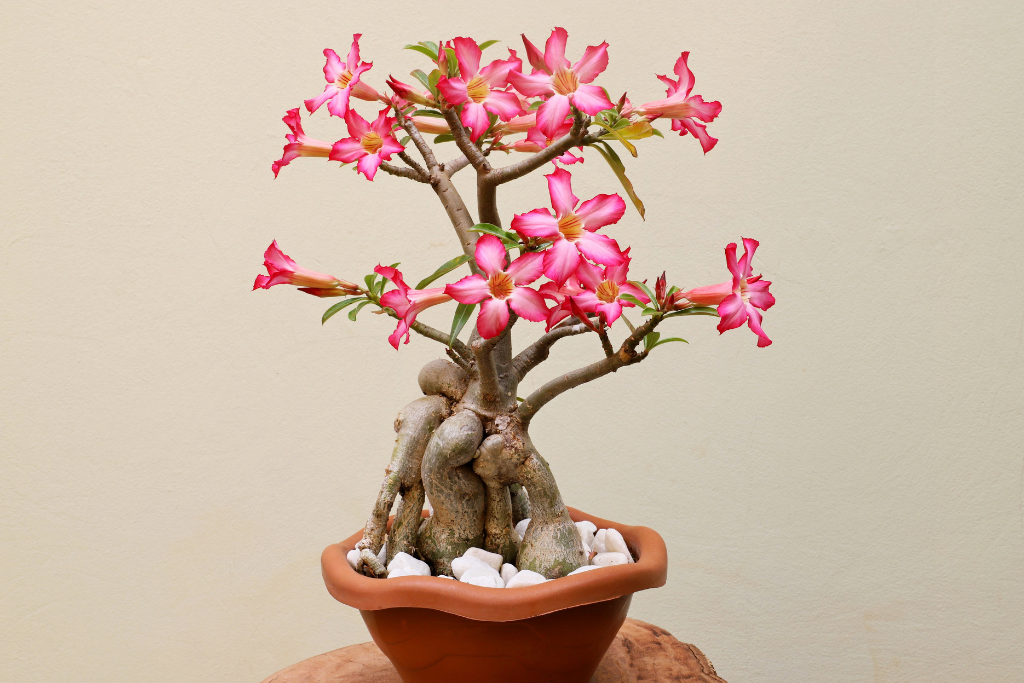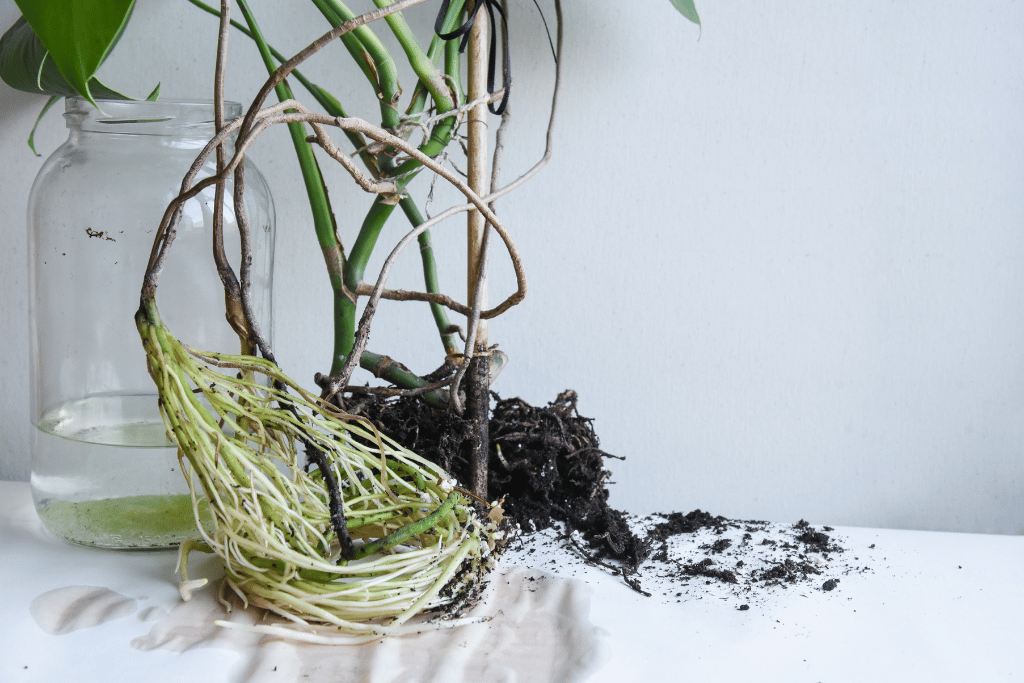
Native to Africa and Arabia, the desert rose bonsai, also known as adenium or Japanese frangipani, is a succulent tree. Some of its characteristics include a large bulbous base with fleshy leaves, producing large white, red or pink flowers when they are exposed to a sufficient amount of sunlight. In this article, we’ll discuss how to prune desert rose bonsai.
If you’re from south-east Asia, it’s likely that you’ve seen people growing desert roses as an ornamental plant. They’re very popular, especially in Thailand. Did you know you could grow it as a bonsai, though? Desert rose can adapt very well to being raised in small bonsai pots, and combined with its vigorous growth in the right conditions; it makes an excellent bonsai tree. One of the only downsides is that desert roses grow less of a ramified branch structure, which can be an off-putting factor for some people.
Adenium drops its leaves in the winter but soon makes up for the lack of them in the springtime with its beautiful flowers. They bloom on small stems attached to the bulbous trunk, which are an absolute sight to see. Desert rose bonsai are commonly grown inside with people in colder climates; however, they should be outside if it’s warm enough for them – particularly in summer. They will thank you for this with much more growth than you would typically see than keeping them inside!
Desert roses are relatively slow-growing, only putting on around 12 inches of growth per year, making it an unsuitable species for those who’d like to see some quick results. For those with patience, though, they make gorgeous specimens which are sure to catch the eyes of anyone, including your friends and family. It should be noted that adenium is toxic to humans and pets, especially the milk sap. You should ensure they are kept well away from children and pets, making sure to keep an eye out for any worrying symptoms.
How to Prune a Desert Rose Bonsai

Adenium is quite the versatile bonsai – they can be pruned all year round. However, if you want to keep a large bloom of flowers, make sure that you time your pruning right to ensure you don’t snip off any flower buds.
Many people aren’t aware, but pruning is actually healthy for a bonsai tree. Although we are snipping off its energy-producing leaves, we’re helping it in the long run. Pruning stimulates more growth and helps produce ramification on our trees. An added bonus with adenium is that the more growth, the more flower buds!
When pruning desert rose bonsai, you should make sure that you wear gloves. As I mentioned earlier, the milk sap excreted by them is toxic, so make sure that you wash your hands after touching the bonsai.
Any long shoots should be trimmed back and damaged parts removed, which should help light reach other parts of the plant and prevent any disease from spreading. Make sure you use sharp pruners to ensure the cuts you make are clean, and if you have been working on another tree, sterilize the pruners.
Wiring Desert Rose Bonsai
After pruning, you might want to do some wiring too. This will help to set branches in place or put a slight bend in the trunk. With adenium, it’s essential that you don’t wire them too tightly; otherwise, you’ll find that they will scar very quickly compared to other species. Wire scars can be hard to remove, and many of them don’t disappear even with age, depending on the severity.
Final Thoughts
As a bonsai, adenium is brilliant. Their lovely, fleshy leaves, combined with their bulbous base, make for an excellent tree. The added bonus of flowers is always pleasant to see in the spring, and it’s lovely to see all the different tints of flowers you can get with them. Make sure that when you handle adenium, though, you wear gloves to ensure you don’t handle the toxic milk sap!
Frequently Asked Questions (FAQ)
When should I prune my desert rose bonsai?
As mentioned before, desert rose bonsai can be pruned at any time of the year. Although, from my research, growers like to do one big hard prune of their desert rose once a year in late February or early March. This is usually before any new growth starts and before the blooms appear. This will help stimulate new growth on your desert rose, rewarding you with lovely explosions of growth when the temperatures get a bit warmer.
Should I deadhead desert rose bonsai?
Deadheading is the process of removing any spent flower stems from plants, ensuring that they don’t start producing seeds. This is quite important for many flowering species of bonsai, and I practice it a lot with my azaleas. Desert roses are no exception; if you aren’t planning to harvest their seed, you should deadhead them. This will help to stimulate a faster reblooming and help in the production of stronger stems. A lot of energy can go into producing seeds, so it’s always essential to ensure you deadhead your flowering plants.
Why are the leaves falling off my desert rose bonsai?
If it’s coming up towards autumn, then it’s pretty standard. Desert roses lose their leaves coming up to winter as all deciduous trees, so don’t panic! If it’s losing leaves in spring or summer, though, then there may be a problem. Some common reasons for plants losing leaves are underwatering or root problems, so make sure that you are able to keep up with the water demand on your bonsai!
Do desert roses like sun or shade?
Coming from tropical and hot climates, desert roses prefer full sun. In summer, make sure that you water them regularly as their water demand will increase a lot. When temperatures start to drop below 12 degrees celsius, make sure that you start to water them less and less. This is due to the fact that they are becoming dormant and will use up a lot less water – and we don’t want to overwater them. Due to their thick and bulbous trunks, adeniums can also store a bit of water, so they will only need watering as frequently as some other species.



